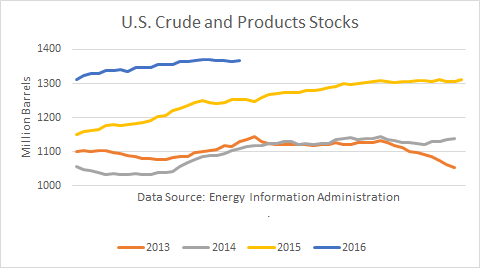
Contrary to popular belief, although the Energy Information Administration (EIA) reported that U.S. crude inventories rose 170,000 b/d last week, that almost certainly did not happen. The EIA’s weekly production number comes from its production model, which is highly flawed. Its monthly numbers come from a survey, which is a much more reliable source of data.
Not including production data from the early 1970s, crude production in the U.S. peaked in April 2015 at 9.6 million barrels per day (mmbd). Crude production appears to have bottomed in July 2016 at 8.6 mmbd, making the peak-to-trough 900,000 b/d.
In August, the EIA reported that crude production increased by 51,000 b/d as the result of increased production in the Gulf of Mexico. But EIA’s forecast in its Short-Term Energy Outlook (STEO) published in July for August turned out to be 524,000 b/d lower than the actual monthly figure, a huge forecasting error. Continue reading "U.S. Crude Oil Production Did Not Increase 170,000 B/D Last Week"

